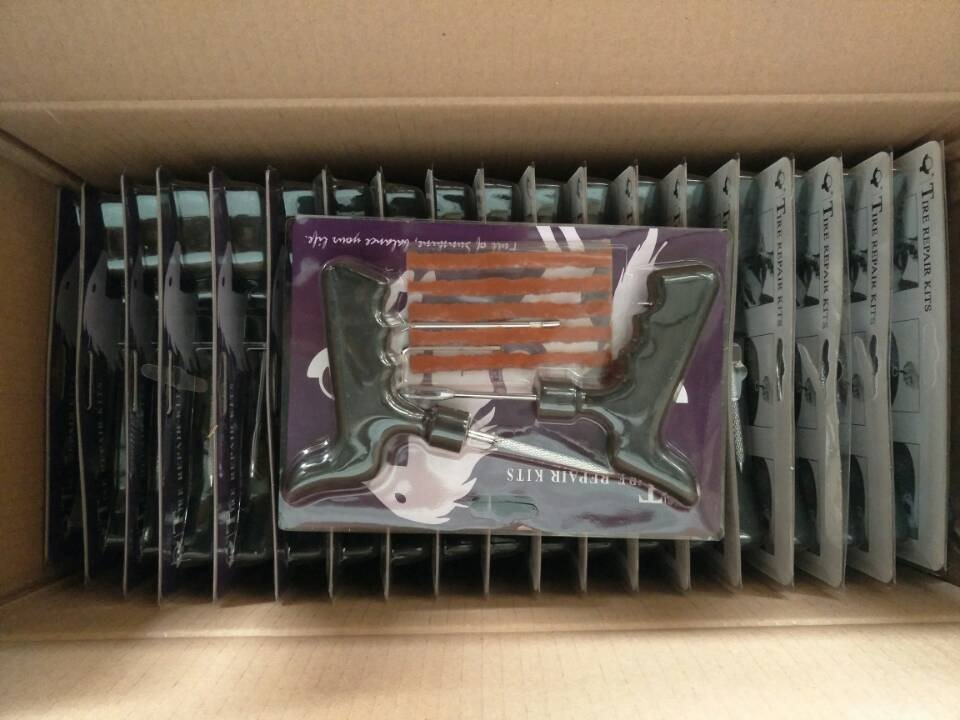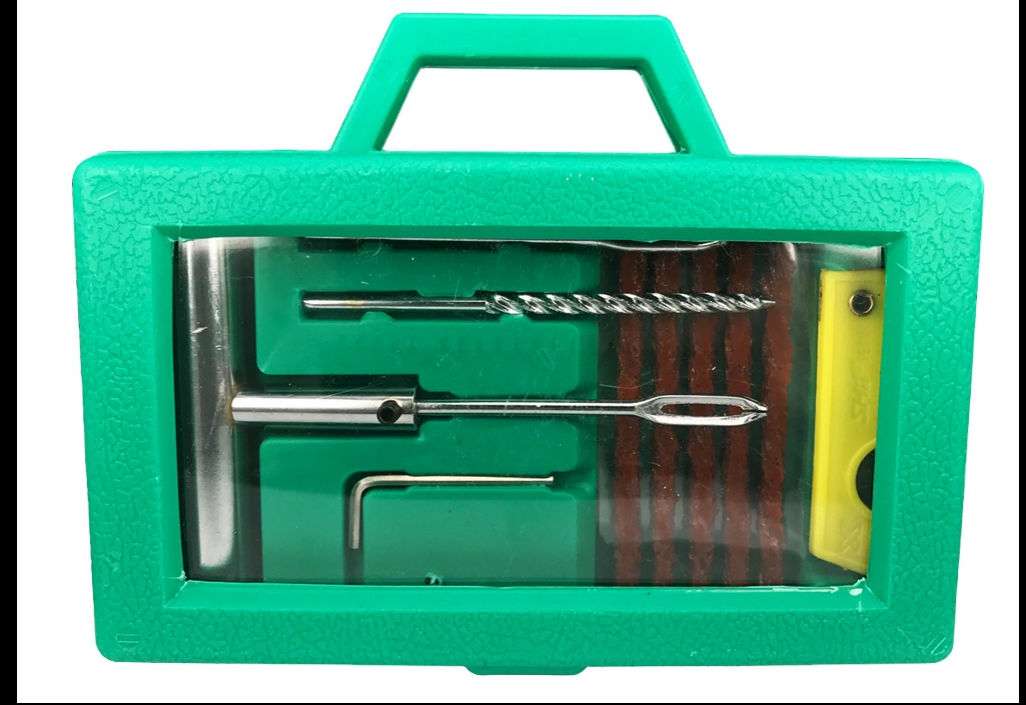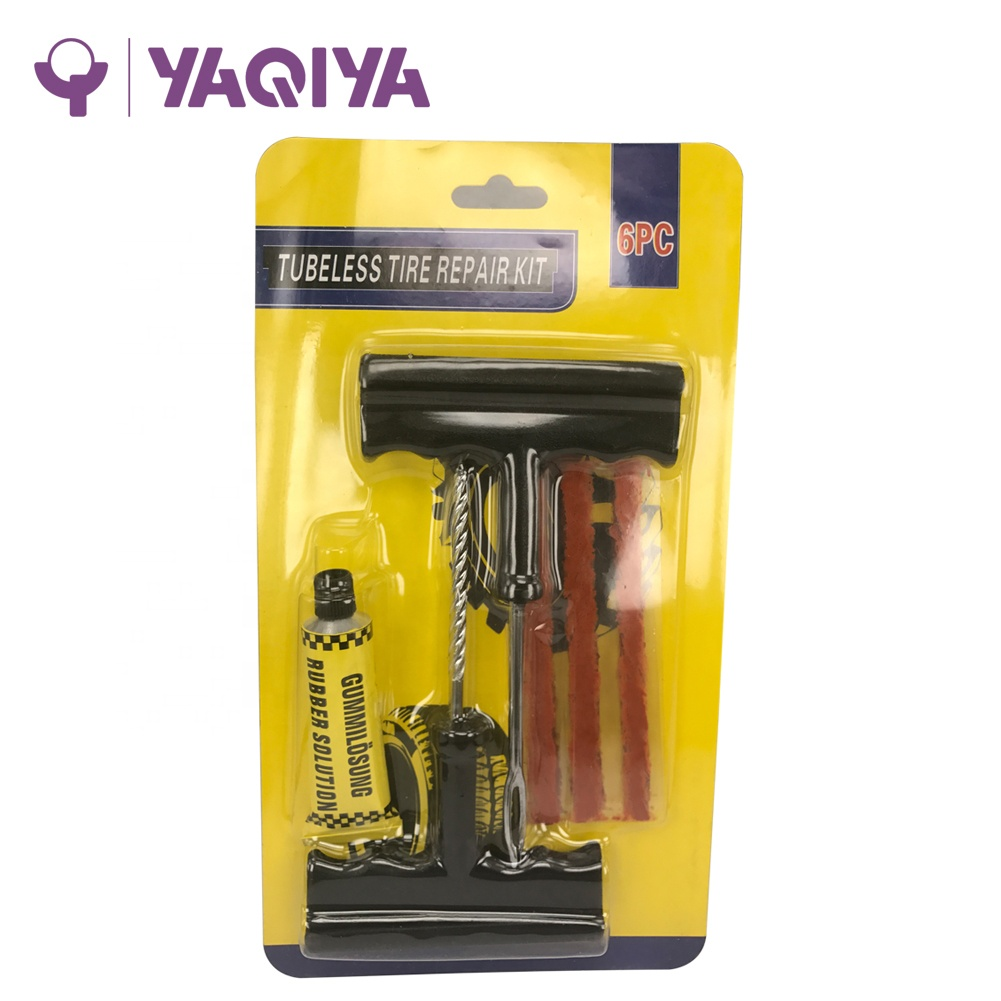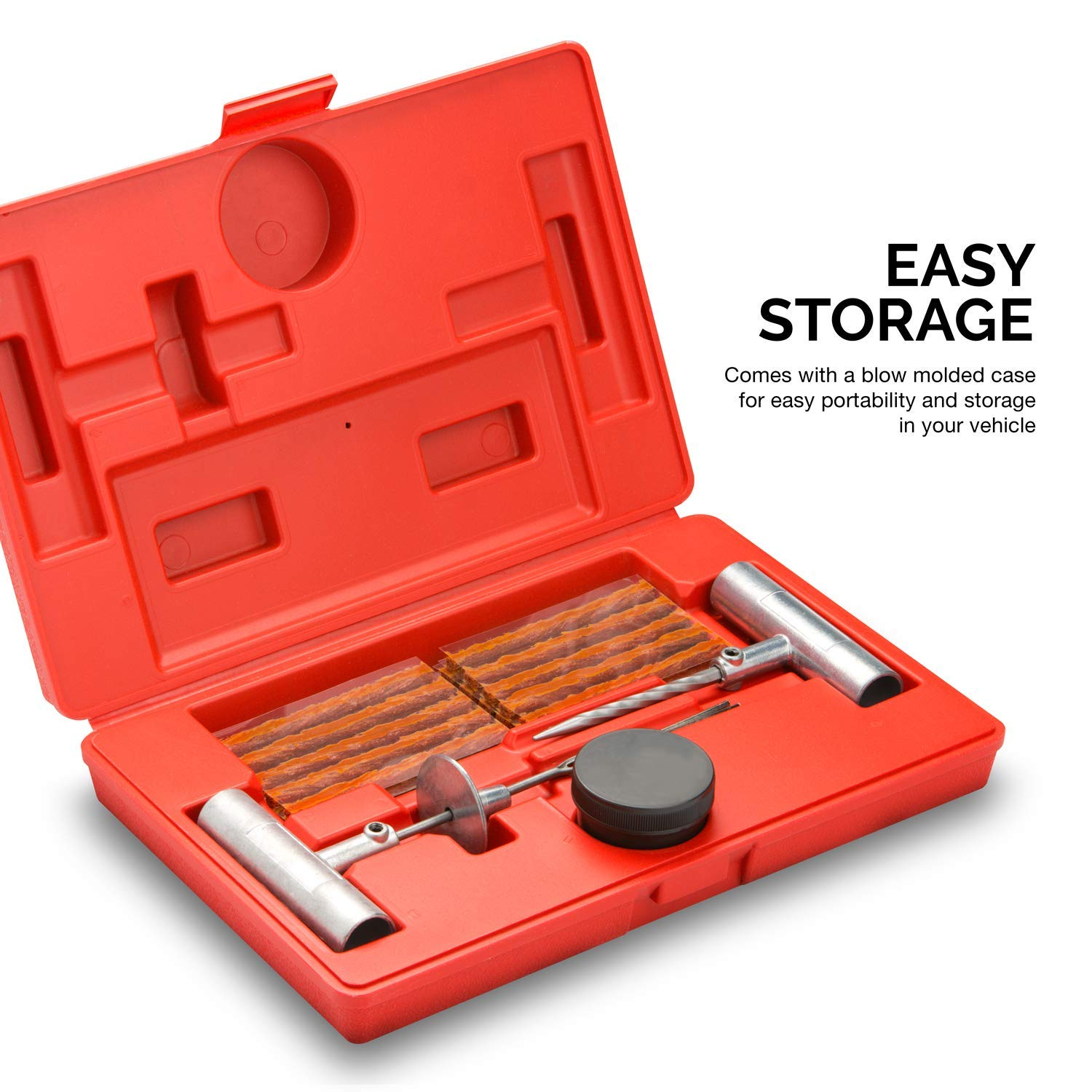Statistics show that’s more than 200 million tire punctures a year for 280 million registered vehicles on the road. So to say that you are highly likely to experience a tire puncture would be an understatement.
It goes without saying that tires are vital components of any vehicle. They are the only contact point between your car and the road, so it is essential to take care of them. But no matter how careful you are, avoiding a tire puncture is pretty much impossible. There is no going around the fact that tires are defenseless against wear and sharp objects on the road and that punctures happen when you least expect it. The next best thing to do is be prepared when the inevitable finally happens. The good news is, all you need to quickly fix an unwelcome puncture is a simple and inexpensive tire repair kit.
What’s in a tire repair kit?
The answer to this question really depends on the kit you’re selecting. There are kits intended for cars and trucks that feature more durable and heavy-duty supplies, while some include smaller versions of common tools that are more appropriately sized for bikes. Some kits will boast full toolsets designed to help you make all different kinds of repairs rather than just those concerning tires, while still others focus mostly on punctures and providing you with patches that will help you stop whatever air is left in the tube from escaping until you can have the whole thing replaced. No matter which kind you get, you’re practicing safe vehicle ownership by making sure that you’re always prepared for the possibility of a tire puncture or similar issue, even if you know it’s not really all that likely.
Flat tire repair kits should be equipped with all the main things you need to fix a flat tire at home, especially in an emergency situation. The following items are what a flat tire repair kit may contain.
Needle and rasp tools, with T-handles
1.Spare needle
2.Premium pliers
3.Hex tools
4.Multiple pieces of repair rubber (usually 40 pieces)
5.Tire gauge
6.Sealing lubricant
7.String plugs
8.Valve cores
9.Chrome and plastic valve caps, and valve extensions
10.Pair of gloves
There may be more or fewer items in your flat tire kit, depending on which one you get. Moreover, flat tire kits tend to come in boxes with all the items organized inside them.
Now we show you some simple tire repair kits.
1. YQY-TPK-01
Insert Tool
Spiral Probe Tool
5PCS String Plugs
Cement
2. YQY-TPK-02

Insert Tool
Spiral Probe Tool
5PCS String Plugs
3. YQY-TPK-03

T-Handle Spiral Probe Tool
Insert Tool
5PCS String Plugs
Knife
4. YQY-TPK-04

T-Handle Insert Tool
T-Handle Spiral Probe Tool
3PCS String Plugs
Cement
5. YQY-TPK-05

U-Handle Insert Tool
T-Handle Spiral Probe Tool
Sealing Lubricant
30pcs String Plugs
How do you use a tire repair kit?
Of course, any kit that you buy, no matter which one you settle for, will come with full instructions pertaining to that specific model and how it’s best used. In general, though, the process is quite standardized and simple. If whatever punctured your tire is still there, you’ll use your pliers to remove it (just pull it right out). Then you’ll use the sharp, straight tool, called a reamer, to clear the hole and actually make it a little larger so the plug you’re about to put in will fit.
Next, thread the rubber plug or “string” through the hole in your other tool, called the threader. This is the one with the end that looks like the eye of a jumbo needle. You’ll put the end of the rubber piece through just like you would a thread and pull it until the tool is in the center of the rubber piece’s length. If you have rubber cement in your kit, you can apply it to the length of the rubber piece now (this will afford it a little more durability). Finally, push that threader tool into the hole so the rubber piece doubles over and becomes a plug, filling the hole.
This part requires some force, so push hard. Finish up by pulling the threader tool (sometimes called an extractor) out of the hole nice and harder; the cut in its very end lets it escape the hole while the rubber plug stays wedged in, stopping the air from escaping.
If you have a tire pump, you can refill your air a little bit here; this is best done in combination with a pressure gauge to make sure you don’t overfill the tire and risk it bursting.


